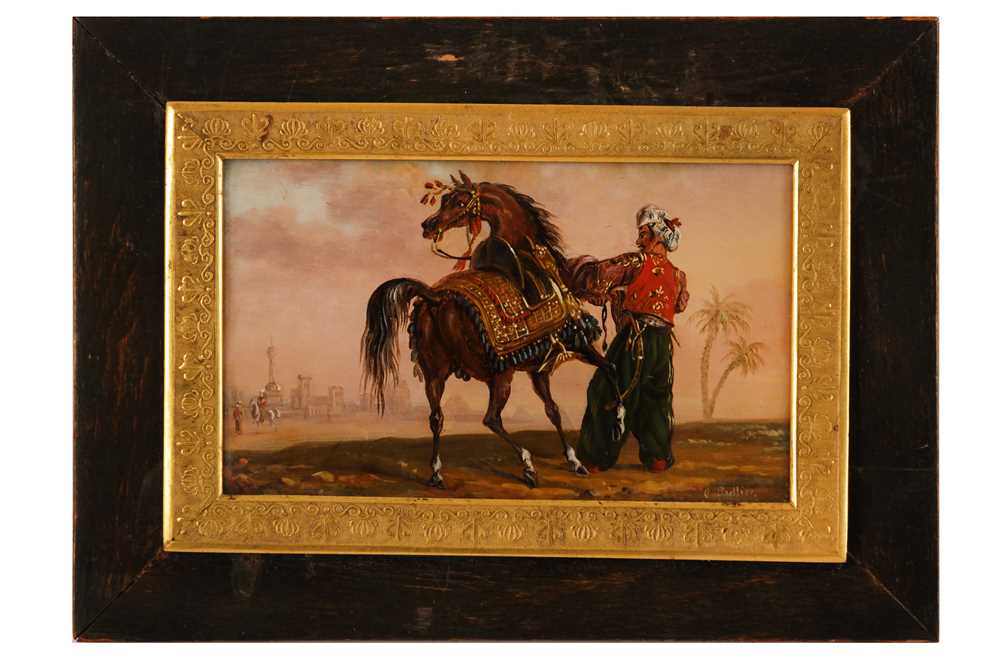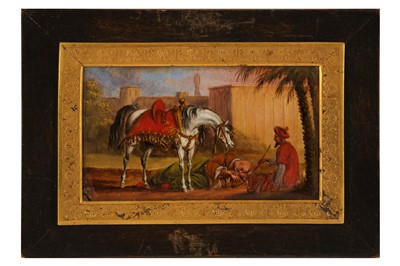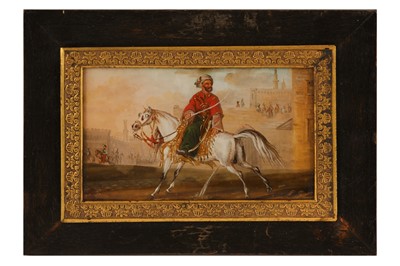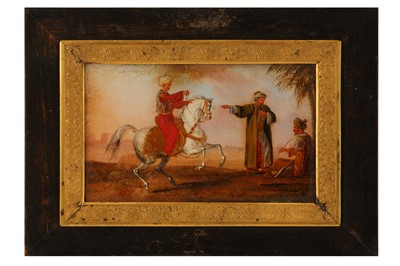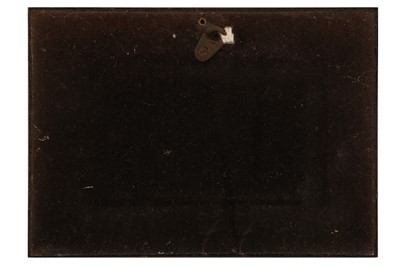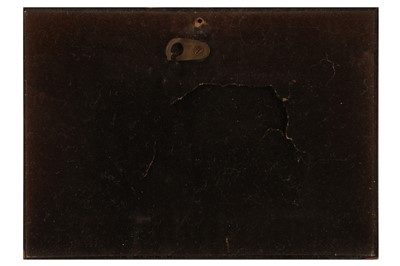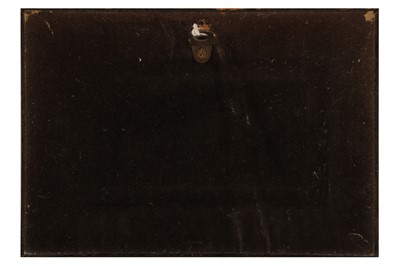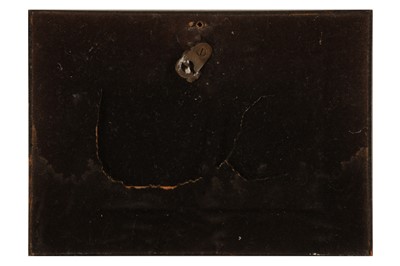2nd Dec, 2020 14:00
A Middle Eastern Journey | Live Online
CHARLES BELLIER (FRENCH B. 1796 -) AFTER CARLE VERNET (FRENCH 1758 – 1836)
France, early 19th century
CHARLES BELLIER (FRENCH B.1796 -) AFTER ANTOINE CHARLES HORACE (CALLED CARLE) VERNET (FRENCH 1758 – 1836)
France, early 19th century
A group of five scenes depicting A Mamluk rider and his horse; with his sword drawn; A traveler resting with his horse; Mamluk on horseback; and A rider on a rearing horse, two examples signed (lower right)
Gouache and watercolour, each 4.5cm x 7.5cm (in matching gilt metal and ebonised frames) (5)
Son of the landscape and marine painter Joseph Vernet (1714–1789), Carle Vernet became an exceptional painter and lithographer of horses and battle scenes. At the age 11, he entered the atelier of Nicolas Bernard Lépicié (1735–1784) and won the Prix de Rome in 1782. Among other military events, he recorded Napoleon’s Italian campaign, which resulted in paintings such as The Battle of Marengo (ca. 1804, Versailles). An avid equestrian, Carle Vernet was also a friend and hunting partner of the Duke of Orléans. Carle’s son Horace (1789–1863) continued the family’s artistic tradition and was also a favourite painter of the Duke, after he became King Louis-Philippe (r. 1830–1848).
The word Mamluk (or Mameluke) derives from the Arabic mamluk, meaning a slave, and specifically refers to Turkish slave soldiers. Around 1240, they formed the royal bodyguard to the Egyptian sultan and helped defend his territory against the crusaders. But a decade later, the Mamluks seized power themselves and formed the Egyptian ruling class for centuries. Since children of Mamluks were prevented from becoming soldiers, the ranks of these military households always had to be replenished with new Turkish slaves. Mamluks were fierce equestrian soldiers, but did not adapt to new warfare based on guns. The Mamluks finally lost their power in 1811 to Muhammad Ali (1769–1849), who thus became the undisputed ruler of Egypt. In 1798, Napoleon fought the Mamluks in his Egyptian campaign, after which the Mamluks became, for Western artists, iconic symbols of the fierce exotic warrior.
Sold for £1,000
Includes Buyer's Premium
Do you have an item similar to the item above? If so please click the link below to submit a free online valuation request through our website.
